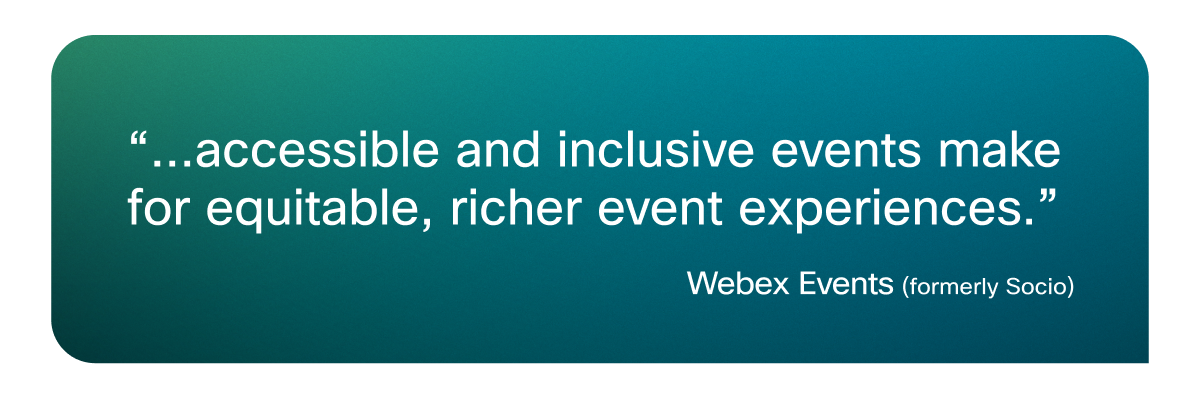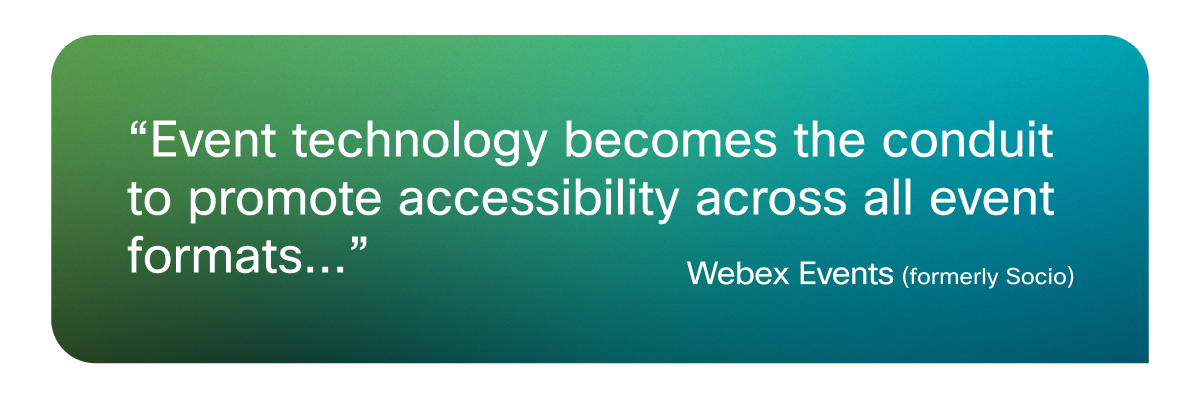To say COVID-19 disrupted the events industry seems like a dramatic understatement when considering its overall impact. The global pandemic has forever changed the way we organize and think about events.
Yet, despite all of the postponed events and uncertainty, a couple of innovations emerged. Notably, organizers realized their events — no matter the size and scope — could reach a larger, global audience.
It was an encouraging sight to see during a difficult time in the events industry. Of course, it was made possible because of rapid advancements in event technology.
Fortunately, event technology squashed traditional barriers like travel and time constraints. More importantly, it enabled people to attend who may otherwise not be able to join in-person due to physical or financial barriers. Due to technology advancements made during the pandemic, it’s now commonplace to add a virtual component to in-person events, essentially turning most events into hybrid experiences with multiple ways to attend and experience content.
In this new event world, organizers need to adopt a hybrid mindset and design inclusive and accessible experiences for all attendees whether they’re attending in-person or virtually.
Event accessibility and inclusivity play a major role when attendees and sponsors are considering attending your event. Most importantly, accessible and inclusive events make for equitable, richer event experiences.

As we move into a new era of events, the community holds higher expectations for accessibility. Event organizers need to ensure their events hit the mark and truly provide an accessible and inclusive experience for all event types – virtual, in-person, or hybrid.
What does accessibility mean for virtual, hybrid, and in-person events?
Event accessibility and inclusivity mean different things to different people — I can’t stress this enough. Attendees who tune in virtually via a phone or computer require uniquely different needs than attendees at the in-person experience. After the past two years, attendees now expect virtual events to be as creative and purposeful as the in-person piece. But those accessibility items need to be there, too.
When it comes to events, there are many accessibility and inclusivity considerations you should keep in mind. This is by no means an exhaustive list, but hopefully it gives you a sense of what you should be considering for your virtual, in-person, and hybrid event experiences.
On the virtual side, you need a hybrid-equipped event platform with built-in accessibility tools, such as:
- Live captioning and translations
- Visual adjustments including content scaling, readable font size, a text magnifier, and adjustable color and orientation adjustments
- Accessibility adjustments including a seizure-safe profile, vision impaired profile, cognitive disability profile, ADHD friendly profile, keyboard navigation, and a screen-reader for users with visual impairments
In-person considerations can include:
- Mobility, visual, and acoustic accessibility
- Option to include preferred pronouns on attendee badges
- Signs with Braille or raised letters
- Lactation stations
- Unscented rooms
- Sign language interpreters
- On-site childcare
- Service animal relief stations
- Allergy/food sensitivity food options
- Additional COVID-19 precautions
Speaking of COVID-19 precautions, I attended an in-person event earlier in the pandemic where the event organizers gave out red, yellow, and green wristbands upon arrival. Red meant, “I’m going to be masked the whole time and please stay six feet away,” whereas green meant, “I want to shake your hand.” I love the idea, because at the end of the day, making attendees feel safe and comfortable is a key part of accessibility and inclusion.
As you think about accessibility, make sure to consider your unique audience and event format. Your accessibility features won’t apply to all attendees, and that’s okay. Some will, and they could make all the difference in ensuring that each of your attendees has a positive event experience.
How to determine accessibility needs for events
As you begin your event planning process, think about the accessibility options I mentioned previously, and choose an end-to-end event platform with accessibility features that can support hybrid experiences. (Remember, virtual is here to stay).
To really hone in on the accessibility needs for your next event, consult an online event accessibility checklist (I suggest this one from the American Bar Association) to get a baseline, and also send multiple surveys during the pre-event window to inquire about specific accessibility needs. Then, cross-reference the survey responses with your checklist. Not only will it help you narrow your focus, you’ll likely discover some additional needs you previously didn’t consider.
How technology drives accessibility for events
Take a moment to think about the amazing advancements in event technology. In two years, the events industry went from hosting glorified virtual meetings to producing world-class hybrid experiences with Hollywood-grade production, virtual reality, and more.

Despite all the cool products and features, we can’t overlook the ways technology takes event accessibility to the next level. Best-in-class event management technology bridges accessibility across virtual and in-person event types, for a uniform hybrid experience.
An event platform expands accessibility right off the bat, to the point where you no longer need to physically attend in-person to enjoy an engaging event experience. You have an event hub on your desktop or in the palm of your hand that allows you to access the event, as well as all content and speakers. You can book a demo with a vendor, connect with sponsors, network by video chat with other attendees, and even compete in challenges from home against attendees at the live experience.
To overcome physical barriers, attendees can activate additional accessibility features, including closed captioning for people who are hard of hearing or screen-readers for people with vision impairment or low vision.
Event technology companies will continue to iterate on different aspects of virtual events that can translate to a live experience, and they’ll start to partner with third parties to expand accessibility in new ways, such as integrating an attendee’s COVID-19 vaccine card into their event profile.

At the end of the day, it comes down to thoughtfully considering each attendee’s unique experience, so attendees can enjoy the best possible event experience, no matter where. Event technology becomes the conduit to promote accessibility across all event formats, and organizers need to embrace accessibility and inclusivity to move their events forward and create an equitable experience for all.





